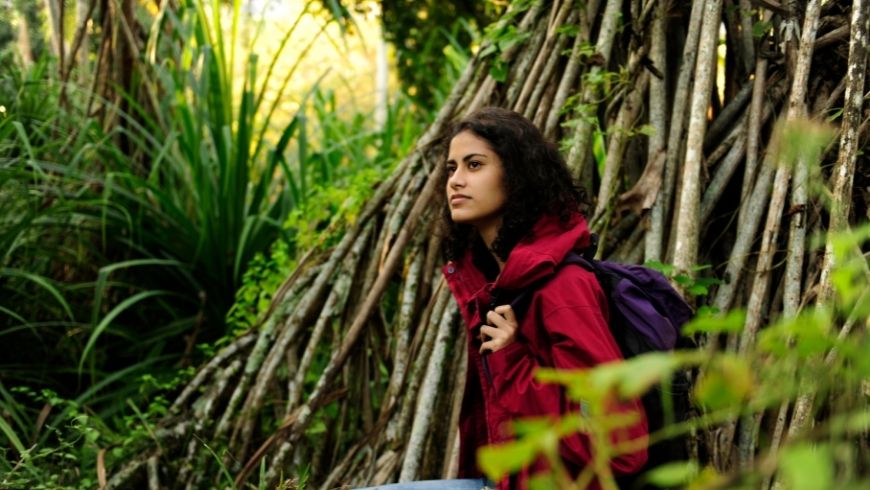Sustainable tourism (or responsible tourism) is a real important concept. Find out the definition
This piece on sustainable tourism, its definition, principles, and types, is provided by Smart Writing Service, a professional essay writing service that cares about students. You may find out that the structure of this essay slightly differs from a standard one for a definition essay. That is done to include as many facts as possible in a condensed way. Feel free to use information you collect from this essay as you see appropriate.
The concept of “sustainable tourism” was formed relatively recently, along with the global concept of sustainable human development. The principles of sustainability in tourism, formulated by the UNWTO and the World Travel and Tourism Council, provide for:
- the conservation and enhancement of the natural and cultural potential of destinations, on the basis of a tourism approach aimed at sustainability;
- the ecological transition of tourism enterprises to resource-saving technologies, reduction of industrial waste;
- involvement of the population in the decision-making process on tourism development (a form of consultations);
- partnership in the relationship between the public and private sectors; promotion of tourism, socio-economic development of certain territories of states.
Many travel companies develop their own plans for the transition to the principles of sustainable development, implement environmental management systems, and apply environmental technologies.
The principles of sustainable development in the practice of tourism are spread under the influence of consumer demand. Given the awareness of the population about the state of the environment and the greening of people’s consciousness, the ecological situation becomes one of the decisive criteria for choosing a place or form of recreation.
This trend is reflected in the growing demand for alternative types of tourism, including eco-tourism.

The development of this relatively new type of tourism is based on three main principles:
- part of the income received from the service of tourists remains in place and goes to nature protection;
- the content of the basic law is in compliance with environmental requirements;
- tourism is conceived as an experience of discovering places, cultures and traditions, as a moment of exchange and mutual enrichment.
Ecotourism encompasses a wide variety of visitors who want to see animals or plants with their own eyes. For example, in Central America and southern Africa, predator sightings are of particular interest. Places, where wild orchids grow, have recently been discovered in Greece.

Tourists accompanied by a guide can visit these protected areas to admire the plants in the wild. Such trips can rightly be classified as ecological, and the persons who take part in them should be considered ecotourists.
Diversification of ecotourism activities is accompanied by the convergence of ecological and other types of tourism. Nature coverage is also inherent in the participants of the mass tourist movement. Swimming and beach holidays, cruises, business trips, are often combined with visits to national or natural and ethnographic parks. The boundaries of ecotourism are losing their clarity, and its scale and socio-economic importance are growing.
Almost every country has the opportunity to organize “green” travel. Today, the main ecotourism flows are directed to the United States, Canada, Australia, New Zealand, Mexico, Nepal, Ecuador, Brazil, Philippines and Kenya. In Europe some of the main Ecotourism destinations are Slovenia, Portugal, Croatia, Austria, Ireland. Ecological tourism is one of the most promising and dynamic forms of tourism.
With the growing requirements for the volume and quality of tourist services, with the emergence of new types and forms of tourist activity, the classification of tourism is changing.
Characteristics of sustainable tourism in 2021

You have probably heard of the term “sustainable development“, which is closely linked to the green economy and means meeting the needs of present generations without compromising the future.
And what is sustainable tourism? Let’s understand what we need to know and do to make our travels sustainable and our children able to see what we see now.
Sustainable tourism is:
- Availability. By supporting the tourism business, which allows you to get a full experience of travel, we stimulate economic development. This creates new jobs and increases the number of people who can use travel services and see the world.
- Animal safety and wellbeing. We must leave the wild alone. No elephant riding, no photoshoots with crocodiles, monkeys, and other animals. Just watch and don’t touch.
- Environmental protection. Minimization of damage in the process of tourist activity. Make sure that your trip does not have a negative impact on the environment. Even minimal. Just imagine what emotions would overwhelm you, if after a long trip to Norway instead of picturesque fjords you would be waiting for a huge dump…
- Controlled use of tourist services technologies. First of all, motor transport, energy, drinking water, etc. Tourism accounts for about 10% of all global carbon emissions. And this is 3.33 billion tons… They heat the planet, which leads to melting glaciers.
- Immersion in nature. The idea is to offer experiences that allow travelers to reconnect with nature.
Sustainable tourism vs popular and mass tourism

Features of the current stage of tourism development reveal the concept of “mass tourism“, reflecting the process of democratization and expansion of tourism, especially in countries over the course, where more than half of the population are consumers of tourism goods and services. The concept of “mass tourism” was introduced and used as an alternative to aristocratic tourism of the XIX century, some expensive types of tourism aimed at selected audiences, and tourism in developing countries, where its development is limited due to low living standards.
Mass tourism should be distinguished from popular. The latter is a tourist activity that has gained wide recognition in society due to its attractiveness and accessibility. The definition of “mass” in the term characterizes the quantitative side of the concept, and the word “popular” – qualitative.
Mass tourism is in fact characterized by large numbers of tourists, who buy trips, such as cruises. This implies an overcrowding of places, a great impact on the environment, and a disadvantage for local populations. In fact, by involving thousands of tourists who go to the same place at the same time, mass tourism can generate Overtourism, damage the environment and upset the places.
On the contrary, sustainable tourism plays an important role in the economic development of places, giving it a boost. It contributes to the introduction and dissemination of new, higher standards of service and, consequently, to improve the quality of people’s lives.
In summary, sustainable tourism ensures that the environment will not be impacted by the arrivals of tourists and that the local community will take advantage of that.




